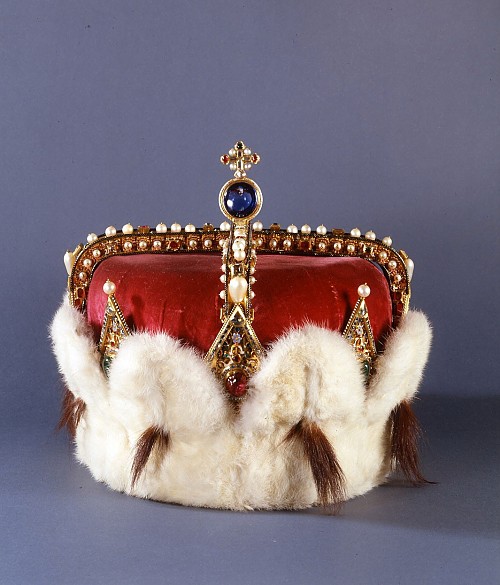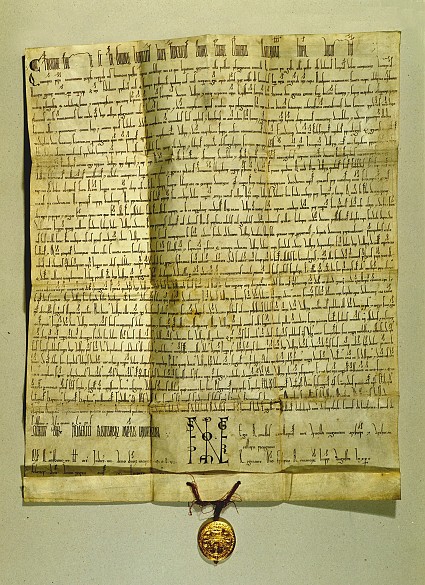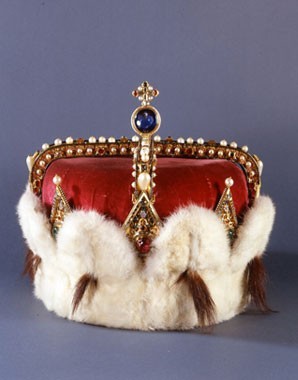Rudolf the forger
The disappointment was great when the House of Habsburg was overlooked in the Golden Bull issued by Charles IV in 1356 which established the rules for the election of the king in the Empire and raised some of the princes of the Empire to prince-electors with extensive privileges. Duke Rudolf felt compelled to react, using means that were anything but legal.
Rudolf felt this not only as an offence to his personal ambition but also saw it as an affront to the dynasty, for thanks to their solid power base in the south-east of the Empire the Habsburgs had become one of the most powerful and influential imperial princely dynasties, and two generations earlier had themselves been Roman-German kings.
The young duke, who had been head of the dynasty since the death of his father in 1358, took measures to compensate for this flaw. In 1358/59 he had a number of documents forged that were intended to justify Austria’s special position within the Empire and secure for his dynasty a status equal to that of kings.
The main document was the famous Privilegium Maius. This forgery was based on the Privilegium Minus of 1156, according to the provisions of which Austria, then still ruled over by the Babenbergs, had been elevated by Emperor Frederick I Barbarossa to a duchy and finally separated from Bavaria. Rudolf had a new version made which extended the original contents of the document with advantageous provisions for Austria in respect of its relationship with the Holy Roman Empire. In this extended version, the House of Habsburg was awarded the title of archduke-palatine. Rudolf had the imperial seal of the genuine document attached to the forgery and ordered the original deed to be destroyed.
Rudolf also had five further documents forged that were intended to confirm the contents of the Privilegium Maius. First a forged letter dated 1156 of Frederick Barbarossa turned up which extended and confirmed the rights bestowed in the Privilegium Maius. Rudolf further presented other forged letters purportedly from King Henry VII (dated 1228), Frederick II (1245) and Rudolf I (1283), which also confirmed the provisions and extended the provisions.
Particularly presumptuous was the forgery of a letter from Emperor Henry IV dated 1058 confirming certain privileges for Austria that had been supposedly granted by Caesar and Nero.
Emperor Charles IV had these documents examined by scholars at his court, including the early Italian humanist Petrarch, who derisively rejected the supposed privileges dating from the time of the ancient Roman emperors. Even though recognition had been refused, Rudolf usurped the imaginary title that he had created for this dynasty in the forgeries and began calling himself ‘palatinatus archidux’ in his documents. He was soon prohibited from doing so by Charles IV. He also adorned himself with other honorific titles, introducing for example the title of Duke of Carniola. This was never contested, with the result that from this time onwards, there was a fourth Habsburg duchy in addition to Austria, Styria and Carinthia.
As an external sign of his elevated status he arrogated for himself the right to wear the archducal coronet, equivalent to a crown. These arbitrary acts led to clashes with Emperor Charles IV, who repeatedly forbade Rudolf to bear these titles and symbols. The privileges invented by Rudolf were confirmed a century later by his descendant, Emperor Frederick III.













